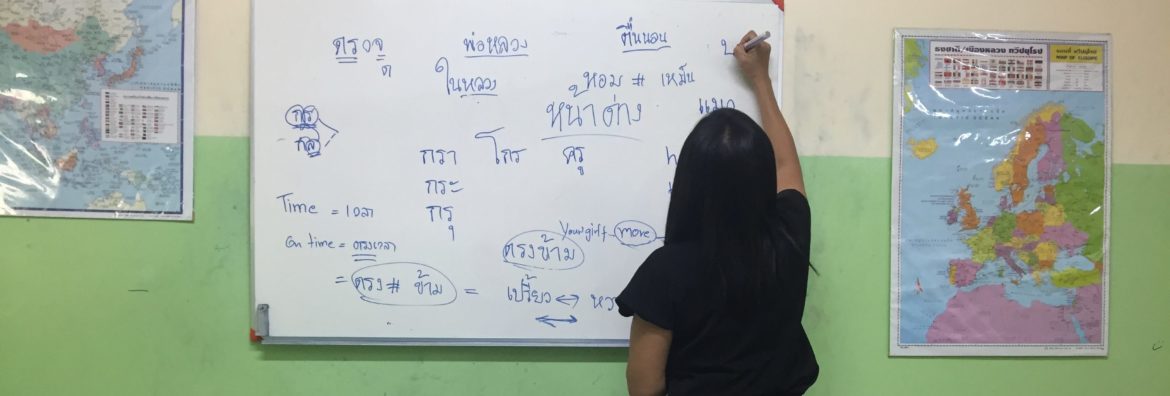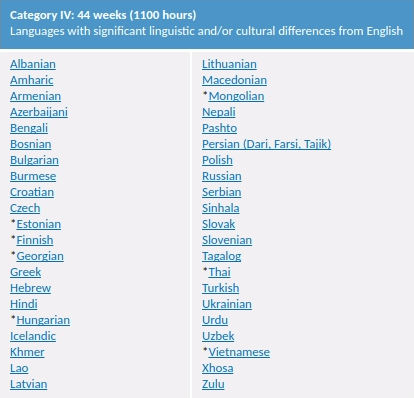The 10 College Football Games That Formed My Fandom

I recently read Study Hall: College Football, Its Stats, And Its Stories by Bill Connelly, college football savant/robot, writer, and podcaster.
The book, which is half-love letter to the game/half-deep dive into its new analytics, opens with Connelly and three other college football wonks listing the 10 ‘formative’ games and moments that turned them into the fans they are today (a large chunk of this section can actually be read in the Amazon preview, though the book is absolutely worth a purchase).
Even though I only watched a handful of these games live, the reason for each being listed was all too familiar. Any college football fan over a certain age will have similar tales of sickening heartbreak, triumph rising inexplicably from desperation, watching under unusual circumstance, and stunned disbelief (for better or worse).
Their lists inspired me to write my own, and while the teams, names, and dates change, the emotions within will be familiar to every college football fan
October 26, 1996: Army 27, Miami (OH) 7
My earliest college football memory and probably the first game I ever attended. Just 8 at the time, the game itself I remember very little of (I actually had to look up if Miami had won or lost). What I do remember is that it was Miami’s homecoming and there were happy people all around (including my grandparents who came down for the game), marching bands, a buzz in the air reminiscent of the county fair, and all sorts of good smells. I’m also pretty sure everything was sepia-toned that day too, the way fall afternoons in our memories always seem to be.
Although I was too young to appreciate much about the game itself or that this Army team would go to become the first and only in program history to win 10 games, I was old enough to realize this college football thing was fun. After getting back that evening, I remember going into our backyard by myself with a football and imagining I too would one day be playing under a gray autumn sky (life’s full of little disappointments).
December 31, 2000: Mississippi State 43, Texas A&M 41
For reasons still unbeknownst to both myself and my concerned family, I latched on hard to Mississippi State as a kid despite never having set foot in the Magnolia State.
If you were to go through childhood photos of me, you would see Bulldog hats and shirts making regular cameos from about first grade through junior high (however my dream of owning a cowbell was never realized). Despite growing up just hours from the Michigan border, there was only one MSU to me and at one point I could rattle off as many (if not more) Bulldogs than I could Buckeyes.
While I may have forgotten the reasons for this odd obsession, I’ll never forget the third and final bowl game Jackie Sherrill’s squad made during my fandom, the 2000 Independence Bowl. My parents were hosting a New Year’s Eve gathering and myself and everyone else with even a passing interest in football were captivated by this game being played somewhere amidst whiteout conditions in Shreveport, Louisiana.
In the days that followed I obsessively replayed clips on ESPN.com’s clunky video player of State coming back from being down 14 in the 4th, Justin Griffith’s blocked PAT return in OT, and Wayne Madkin’s game-winning scramble to the plane. For years, a newspaper photo of the game was taped on the back of my bedroom door, and even decades the later the game continues to spawn homages from writers like Connelly and even on-field tributes from Clanga Clanga themselves.
January 3, 2003: Ohio State 31, Miami (FL) 24 (2OT)
Confession: I initially bandwagoned my future alma mater, the same school my family tried to indoctrinate upon me with at birth. The fact that Ohio State football, which mostly seemed like a source of familial frustration during my formidable years (see: 2-10-1), was undefeated heading into the 2002 iteration of The Game seemed like nothing more than a neat bit of trivia to 14-year old me.
But with Ohio State up 14-9 and just a minute remaining, Michigan’s final drive suddenly had me feeling for the first time like I had actual skin in the game, reducing me to watching hunkered under a blanket next to my dad (who had long ago already taken his customary seat on the floor, as he always does during tight game situations). As sports can do, I suddenly felt like this football team was personally representing me, my family, and where I was from.
An equally new feeling would overtake me about five weeks later in the National Championship, the first any team I liked made it to since I was of remembering-age. The bewilderment of not only Ohio State just being in the game but taking it to Larry Coker’s stacked roster of future NFLers was as exhilarating as watching overtime was exhausting.
Watching with family in my uncle’s basement, Ken Dorsey’s final pass hitting the turf launched us all into some sort of bouncing, hugging moshpit. Going back to that basement even years later always felt like visiting hallowed ground: something important happened here. I had always loved sports, but 8th grade me had no idea knew they could be this good.
December 4, 2003: Miami (OH) 33, Bowling Green 10
Ok, I sort of bandwagoned my siblings’ alma mater, too. I in no way renounced my new Ohio State ardor during Miami football’s most recent golden era, but in my mind they were technically the home team by a factor of 30 minutes and at the time I thought I was going to follow in my siblings’ footsteps and be a Redhawk one day.
Plus, I’ve always had (and still do) a soft spot in my heart for mid-major teams doing major conference things.

Photo: giard.smugmug.com
In an epic MAC season which saw three schools finish with 10 wins, Ben Roethlisberger’s #14 Redhawks squared off against Josh Harris’ #20 Bowling Green Falcons in the conference title game (the last to not be played at a neutral site).
The Friday night tilt was hyperlocal to me yet garnered national attention, much like the many European soccer derbies I was always fascinated with. Puzzled that my sister, a current Miami student, would rather study upstairs, I watched alone as Big Ben lead Miami to their first conference title since the mid-80s.
Around that time, I remember my brother saying he once stopped into a McDonald’s at the BGSU exit with a Miami hat on and received as he described, ‘daggers’ from the locals. As a kid, I ate up that even this seemingly small-time football could inspire such large begrudgement.
Sept. 4, 2004: LSU 22, Oregon State 21 (OT)
Maybe the first time I ever felt genuinely sick for an athlete I had zero connection to. The upset-minded Beavers had defending national champions LSU on the ropes in Baton Rouge and probably would have won in regulation if not for the ails of kicker Alex Serna.
A freshman walk-on, Serna missed three PATs that day including one in overtime responsible for the end of the game, this painful photo, possibly the ‘college kickers, man‘ meme, and me burying my face in the couch out of agonizing empathy. So moved by what I saw, I wrote many now-lost words about the incident on my (first) short-lived college football blog (hosted by Freewebs).
I gained a strange fondness for this game as Serna’s career went along, which became one truly worthy of its own 30 for 30 special. After receiving an outpouring of support from fans (including a 12-year old fan who was fighting cancer) he went on that season to make 17 of 20 field goals, win the Lou Groza award the following year, set numerous school records, and make every single extra point the rest of his career.
Even with that happy ending, the scene is still a tough one to watch:
November 25, 2006: BYU 33, Utah 31
One thing I’ve always loved about college football is that a true understanding of what it’s like to be a fan of another school isn’t attainable by attending a single game, by reading a book, or through a conversation with a super fan. Like living in another country, the culture of a team is often something you have to be born into and grow up around to truly ‘get’.
I got at least a small taste of what being a BYU fan it was like through this classic Holy War matchup. One of my best friends in high school was Mormon and his dad had even been on BYU’s practice squad in the 80s (as he tells it, he once got reamed for sacking Steve Young during a no-contact drill).
While I knew John Beck’s pass to a beyond wide-open Jonny Harline was an important win because the NCAA Football video games told me it was a big rivalry game, I could tell just by being around his family in the afterglow that it meant so much more than I could possibly comprehend or be explained in an afternoon.
October 25, 2008: Penn State 13, Ohio State 6
Although temperature records only show it as being in the low 40s, I remember being so paralyzed by the cold (and maybe s̶o̶m̶e̶ all of the liquor I downed in the hour between rowing practice and kickoff) that I paced around the concourse by myself during halftime in an attempt to try and warm up. That didn’t work, and in the third quarter the cold and my post-buzz crash reduced me to being pretty much the only person in my section that stayed seated.
I finally came to in the fourth quarter, just in time to see #3 Penn State go on a 10-0 run and Terrelle Pryor throw a pick in the far end zone as time ran out. Since then, I’ve always tried to heed my brother’s sage advice regarding drinking and football: “Remember the game.” (although games like that I’m fine with forgetting).
November 1, 2008: Texas Tech 39, Texas 33
Dressed as Peewee Herman at a Halloween party, I can vividly remember this game pulling more and more people into the living room where the TV was tuned to what was going on in Lubbock.
The reactions around me to Texas’ Blake Gideon dropping the pick with :08 left, then to Crabtree escaping down the line for the winner were loud enough to be an Ohio State game. College football, even games with minimal impact on your own school, just seems to have greater gravitas when you too are in college.
November 14, 2009: Ohio State 27, Iowa 24 (OT)
A small downside of attending a university that’s a college football blue blood is that opportunities to storm the field are scarce (poor me, I know). On paper, this de facto Big 10 Championship game didn’t look like it would have storms in the forecast, but the way it played out provided me (and anyone that started school after the ’06 season) with their one and only chance to rush as students.
The game was a slugfest, and after Iowa went fourth and out in overtime, backup kicker and 26-year old Devin Barclay was called up to try a potential game winner aimed right at where I was sitting. He nailed it, cascading the student section onto the field. Once there, I looked back for the two friends I came to the game with, to no avail. They told me later they didn’t know where I had bolted off to–one even said they thought I really had to go to the bathroom (they weren’t big football fans).
Running around on the field by myself, I patted plenty of shoulder pads, high-fived long snapper Jake McQuaide, and even got into a sort of gross, Thanksgiving wishbone-style tug of war over a scarlet mouthpiece another student and I spied on the ground (I lost). I’m convinced though another fan has an even better souvenir from the night: I recall hearing that Barclay’s nameplate, which you can see just barely sewn on in the above video, was ripped from its seams by someone in the aftermath.
October 8, 2011: Nebraska 34, Ohio State 27
My first experience as an away fan. Myself and three Buckeye friends made the 12-hour drive to visit an NU friend and attend the first ever Ohio State-Nebraska Big Ten game. This was my first soccer-style ‘away day’, my Green Street Hooligans moment (minus the street fighting, although we did get dried corn thrown at us).
While the students and Lincoln were friendly to us four Buckeye ambassadors, the football gods were not. After backup QB Joe Bauserman replaced an injured Braxton Miller, he completed just one of his 10 passes on the night (two if you count interceptions), inspiring this meme that still gets tweeted whenever an OSU quarterback is having an errant day. In the meantime, Ohio State’s 21-point lead withered and eventually Nebraska took the lead for good with 5 minutes remaining.
For whatever reason in that moment I had the wherewithal to take a picture (on a digital camera no less), which I consider to be the magnum opus of thrill-of-victory-agony-of-defeat photos:

If you’re a non-fan and managed to read this far, you might notice that college football is so much more than wins and losses, than rankings and redshirts, than tailgates and touchdowns—stats and scores are secondary to the stories every game generates.
As Connelly said on his podcast recently, “Every college football game, no matter how big or small, means the world to at least a few hundred people.” There’s something in this sport for everyone, and its reliable appearance every autumn weekend gives a sense of renewal and marks the passing of time the way only a handful of holidays can.
Like how the meal is an excuse rather than the reason for everyone to get together for Thanksgiving dinner, college football is a centerpiece on which we can check back into something that for the most part goes unchanged, see some faces old and new, and make some new memories together.






